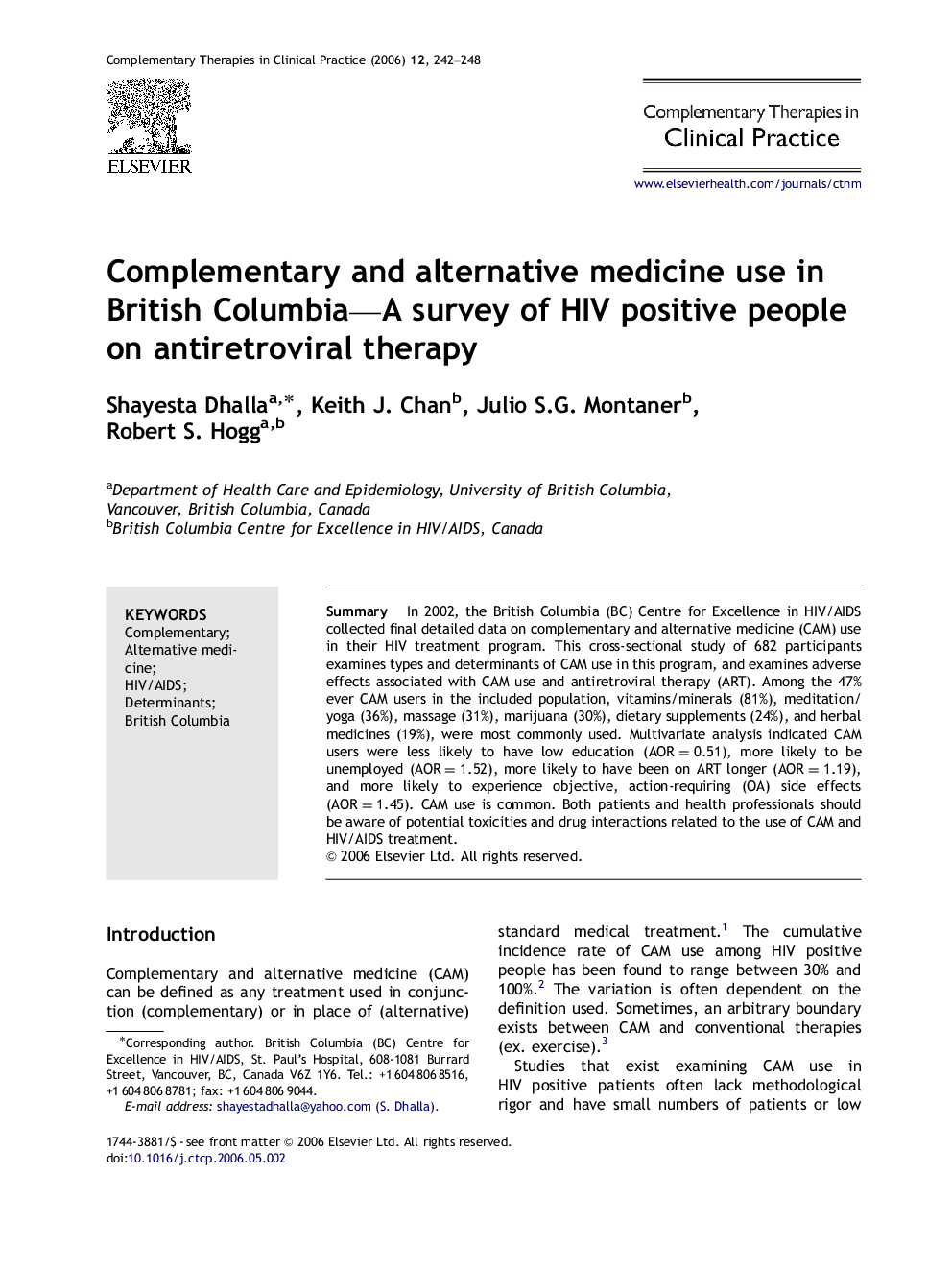| Article ID | Journal | Published Year | Pages | File Type |
|---|---|---|---|---|
| 2628708 | Complementary Therapies in Clinical Practice | 2006 | 7 Pages |
SummaryIn 2002, the British Columbia (BC) Centre for Excellence in HIV/AIDS collected final detailed data on complementary and alternative medicine (CAM) use in their HIV treatment program. This cross-sectional study of 682 participants examines types and determinants of CAM use in this program, and examines adverse effects associated with CAM use and antiretroviral therapy (ART). Among the 47% ever CAM users in the included population, vitamins/minerals (81%), meditation/yoga (36%), massage (31%), marijuana (30%), dietary supplements (24%), and herbal medicines (19%), were most commonly used. Multivariate analysis indicated CAM users were less likely to have low education (AOR=0.51), more likely to be unemployed (AOR=1.52), more likely to have been on ART longer (AOR=1.19), and more likely to experience objective, action-requiring (OA) side effects (AOR=1.45). CAM use is common. Both patients and health professionals should be aware of potential toxicities and drug interactions related to the use of CAM and HIV/AIDS treatment.
